R.D. Bailey Lake
Introduction
Text-to-speech Audio
R. D. Bailey Lake is located in between the towns of Justice, West Virginia in Wyoming County, and Gilbert, West Virginia in Mingo County. The lake was created after the construction of a dam along the Guyandotte River in 1980, in an effort by officials to stop the high flood rates in the area. The lake was originally known as the Justice Lake, but was later renamed in an effort to honor R.D. Bailey Sr., a prominent politician and judge who famously presided over the case resulting from the Hatfield and McCoy feud. The lake is surrounded by 19,000 acres of land and doubles as a wildlife management preserve. Visitors are invited to hike, swim, camp, or partake in plethora of other recreational activities.
Images
Overlook to the R.D. Bailey Dam.
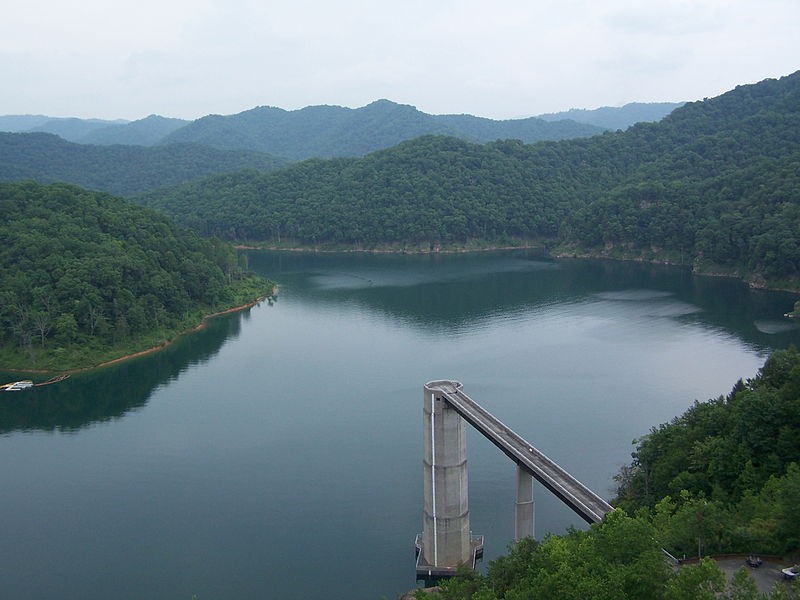
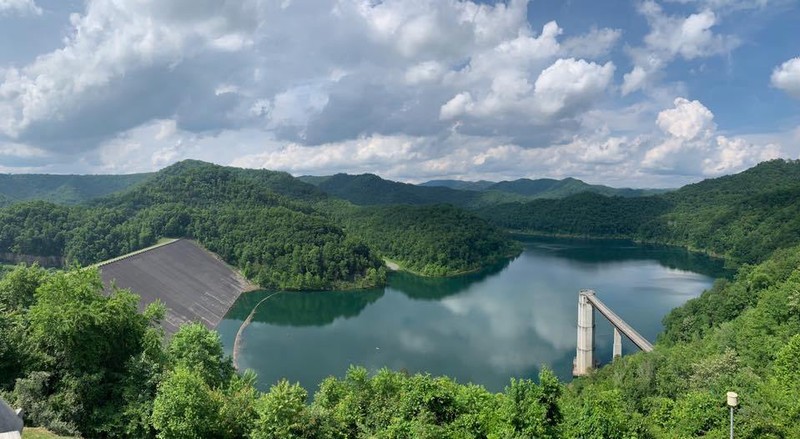
A look at the lake and dam during autumn.
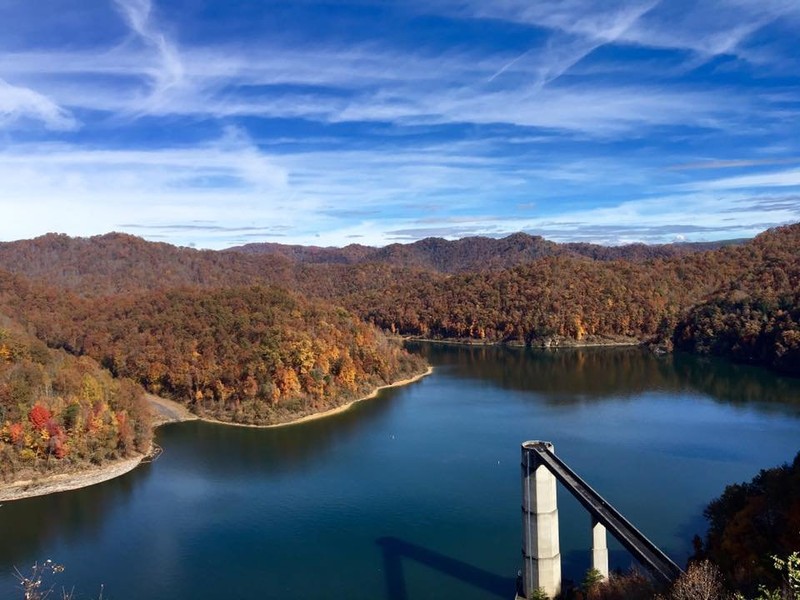
The outflow of the dam.
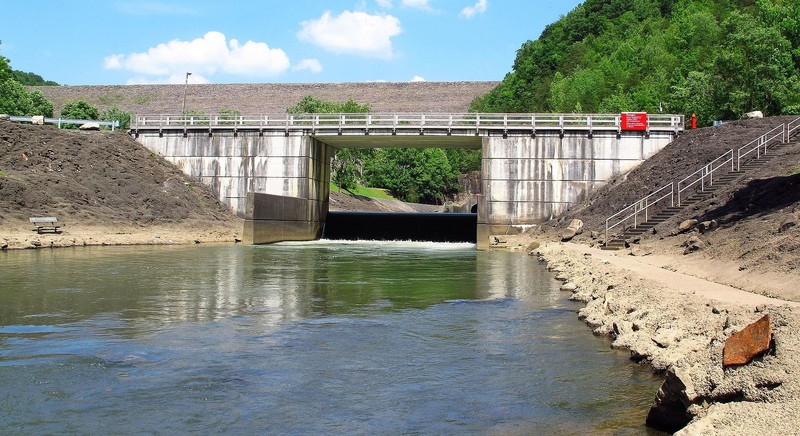
The visitor's center of the lake and dam.
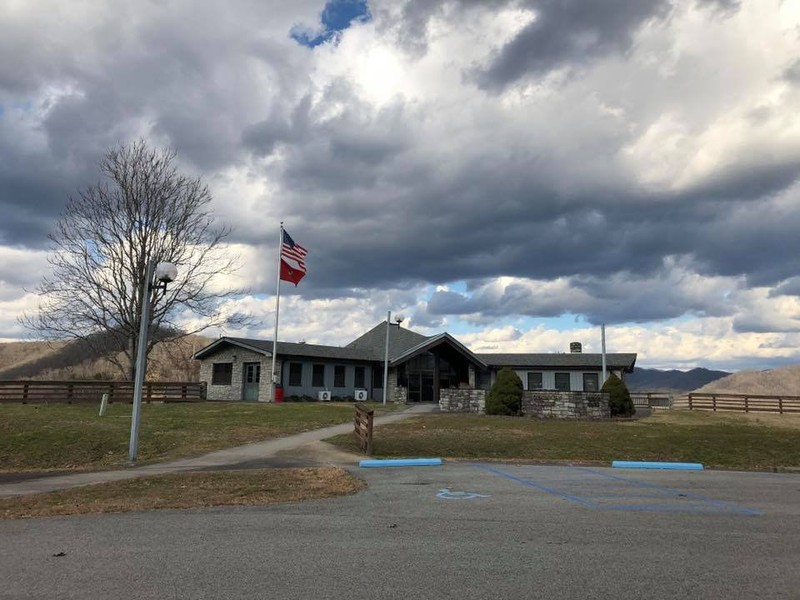
One of the group shelters available to visitors at the lake.
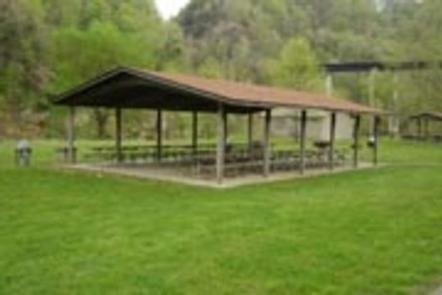
Backstory and Context
Text-to-speech Audio
The R.D. Bailey Lake was created as part of a flood control effort in the late 1960s. In an effort to quell flooding from the Guyandotte River, officials began constructing a $180 million dollar dam on the portion of the lake which flows near the towns of Justice in Wyoming County, West Virignia and Gilbert in Mingo County, West Virginia. Construction on the dam was completed in the spring of 1980, with the lake which resulted from the dam initially being named the Justice Lake as a result of its proximity to the eponymous town. At the time of its completion, the dam stood 310 feet tall with a top length of nearly 1,400 feet, and possesses a water storage capacity of sixty-six billion gallons.
The lake was soon renamed, however, and was transformed from Justice Lake to the R.D. Bailey Lake in honor of a West Virginia politician who proved himself to be an important figure to the state - especially to those who resided in the communities of Mingo County. R.D. Bailey Sr. was born July 26, 1883 in Baileysville, West Virginia, of which his grandfather was the founder, before later relocating to Mingo County. During his time in Mingo County, he served as a deputy sheriff, the county prosecutor, Democratic state chairman, a state senator, state Board of Education member, and as Mingo County Circuit Judge during the Matewan Massacre trial. Bailey passed away in 1961, and years later the U.S. Supreme Court moved to rename the Justice Lake in honor of the late judge.
The R.D. Bailey lake offers a plethora of scenic views for visitors including not merely the lake itself, but the surrounding 19,000 acres of land which the Army Corps of Engineers leased to the state of West Virginia;s Division of Natural Resources as part of the attraction. Under the Corps of Engineers' care, the land and the lake have since been used for wildlife management and as a preserve. The lake also boasts numerous activities for visitors including picnicking, boating, a recreational swimming pool, fishing, camping, rock climbing, and hiking. The area also features a visitor's center, where guests can learn the history of the lake as well as request information about the site, in addition to several group sheds where visitors can sit and talk or eat together.
The lake was soon renamed, however, and was transformed from Justice Lake to the R.D. Bailey Lake in honor of a West Virginia politician who proved himself to be an important figure to the state - especially to those who resided in the communities of Mingo County. R.D. Bailey Sr. was born July 26, 1883 in Baileysville, West Virginia, of which his grandfather was the founder, before later relocating to Mingo County. During his time in Mingo County, he served as a deputy sheriff, the county prosecutor, Democratic state chairman, a state senator, state Board of Education member, and as Mingo County Circuit Judge during the Matewan Massacre trial. Bailey passed away in 1961, and years later the U.S. Supreme Court moved to rename the Justice Lake in honor of the late judge.
The R.D. Bailey lake offers a plethora of scenic views for visitors including not merely the lake itself, but the surrounding 19,000 acres of land which the Army Corps of Engineers leased to the state of West Virginia;s Division of Natural Resources as part of the attraction. Under the Corps of Engineers' care, the land and the lake have since been used for wildlife management and as a preserve. The lake also boasts numerous activities for visitors including picnicking, boating, a recreational swimming pool, fishing, camping, rock climbing, and hiking. The area also features a visitor's center, where guests can learn the history of the lake as well as request information about the site, in addition to several group sheds where visitors can sit and talk or eat together.
Sources
R.D. Bailey Lake. wvdnr. . Accessed July 26, 2019. http://www.wvdnr.gov/fishing/public_access.asp?county=Wyoming&type=Lakes&point=I82.
